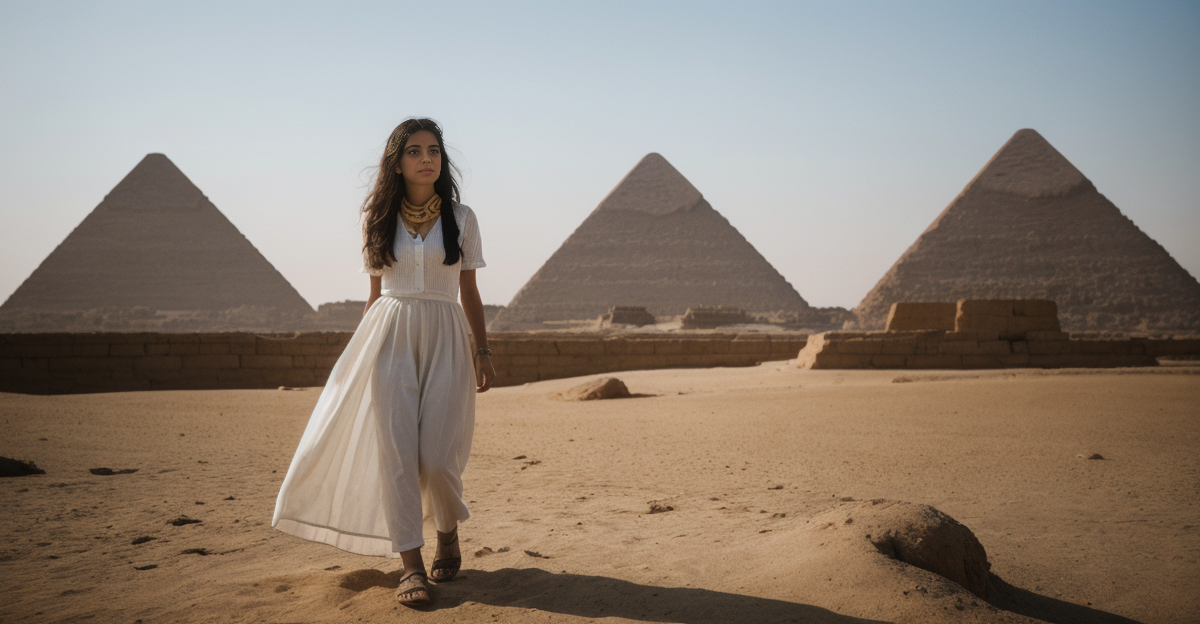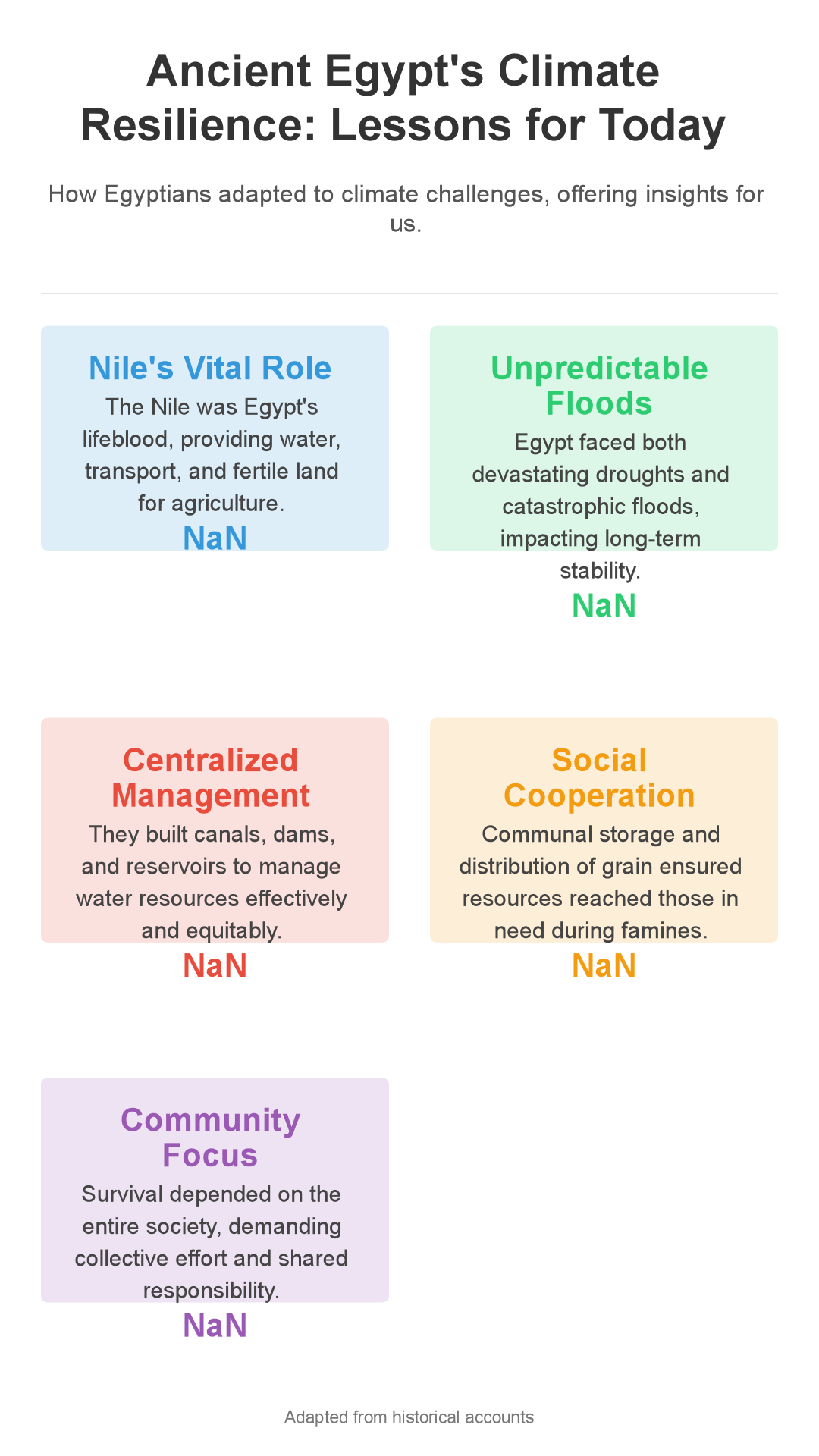
Feeling overwhelmed by climate change? You're not alone. Even the ancient Egyptians grappled with si
Feeling overwhelmed by climate change? You’re not alone. But what if I told you the ancient Egyptians faced similar anxieties thousands of years ago, and their response wasn’t despair, but a surprising focus on community? Tap that follow button for more fascinating historical insights!
Let’s face it: climate change is a daunting challenge. Sometimes, the news makes you want to hide (in a sustainably sourced bunker, naturally).
But lately, I’ve been immersed in ancient history, and I’ve discovered something remarkable: the ancient Egyptians grappled with their own environmental anxieties, and their solutions offer a compelling lesson.
The Nile’s Fluctuations: Egypt’s Climate Change Challenge
Forget melting glaciers; for the Egyptians, the life and death of their civilization hinged on the Nile. Their entire existence was intertwined with its annual floods.
The Nile’s predictable rhythm meant fertile land, bountiful harvests, and a thriving society. But when that rhythm faltered, chaos ensued.
Dependence on the Nile River
Imagine your local supermarket vanishing overnight. That’s the equivalent of the Nile failing to deliver its life-giving floods.
The river was everything: their source of drinking water, their highway for transportation, and, most importantly, the very foundation of their agriculture. Without consistent flooding, fields withered, and famine threatened.
Variability in Nile Floods
The challenge wasn’t just a lack of water; it was also the danger of *too much*. Catastrophic floods could obliterate entire villages and decimate crops, leading to widespread devastation.
They constantly battled two extremes: crippling drought and destructive deluge. Talk about a weather-related tightrope walk! This unpredictable variability made long-term planning and stability incredibly difficult.
Historical Records of Famine
Fortunately, the Egyptians were meticulous record keepers. Hieroglyphs and ancient texts are filled with stark accounts of famine and societal upheaval caused by the Nile’s erratic floods.
We’re talking about periods of widespread starvation, social unrest, and even political instability. These weren’t isolated incidents; they were recurring crises that profoundly shaped Egyptian society.
Beyond Panic: Egyptian Strategies for Resilience
So, how did they cope? They didn’t simply surrender to fate (though, I’m sure the thought crossed their minds). Instead, they developed ingenious strategies for resilience, emphasizing collective action and adaptation.
Centralized Water Management
The Egyptians were masters of irrigation engineering. They constructed intricate systems of canals, dams, and reservoirs to carefully manage the Nile’s flow, storing water during times of abundance and distributing it during periods of scarcity.
This wasn’t a free-for-all; it was a centralized system, often overseen by the Pharaoh, ensuring (in theory, at least) equitable resource allocation.
Social Cohesion and Cooperation
During times of crisis, the Egyptians relied on communal storage and distribution of resources. Granaries were established to stockpile surplus grain, which could then be distributed to those in need during famines.
This required a remarkable degree of social cohesion and cooperation. The understanding was that they were all in it together and that everyone needed to contribute to the collective well-being. This is where things get really interesting.
Religious Beliefs as Coping Mechanisms
Sometimes, all you can do is pray. And the Egyptians certainly did. They had a complex pantheon of gods and goddesses associated with the Nile, the sun, and the harvest.
Elaborate rituals and offerings were performed to appease these deities and ensure favorable conditions.
While we might not share the same beliefs today, it’s crucial to recognize the role that faith and spirituality played in providing comfort and a sense of meaning during uncertain times.
Community Over Individualism: A Key to Egyptian Success
What struck me most was the unwavering emphasis on community. It wasn’t about individual survival; it was about the survival of the entire society. And that made all the difference.
Collective Effort
Building pyramids wasn’t just about glorifying the Pharaoh; it fostered a sense of shared purpose and collective identity. And, of course, all that labor contributed to the creation of irrigation canals.
Agriculture and infrastructure projects were massive undertakings that demanded the coordinated effort of thousands of people.
The Pharaoh’s Role
The Pharaoh wasn’t merely a ruler; he was viewed as a steward of the community’s well-being. He was responsible for ensuring the proper management of resources and the protection of his people.
While power dynamics were undoubtedly complex, the ideal was that the Pharaoh served the needs of the community. He was, in theory, the ultimate public servant.
Social Safety Nets
Evidence suggests that the Egyptians had social safety nets in place to support vulnerable populations. While the details are still debated by historians, it appears that systems existed to provide food and resources to the poor and the elderly.
Lessons for Today: Adapting the Ancient Egyptian Model
So, what can we glean from the ancient Egyptians? Can their ancient solutions offer any valuable insights into our modern climate crisis?
Localized Solutions
The Egyptians understood that their challenges were unique to their environment. They didn’t attempt to apply a generic, one-size-fits-all solution; they developed strategies tailored to the specific conditions of the Nile River Valley.
This underscores the importance of localized solutions that are adapted to specific environmental challenges.
Community-Based Approaches
The Egyptian emphasis on community is perhaps the most pertinent lesson for today. Climate resilience isn’t just about individual actions; it’s about building strong, resilient communities that can support each other during times of crisis.
Cultural Beliefs and Social Structures
The Egyptians’ religious beliefs and social structures played a significant role in shaping their response to climate change.
This reminds us that cultural beliefs and social norms can profoundly influence how we perceive and respond to environmental challenges.
The ancient Egyptians weren’t perfect, but their enduring civilization offers a compelling example of how societies can adapt and thrive in the face of environmental uncertainty.
By prioritizing community, developing localized solutions, and recognizing the influence of cultural beliefs, they built a remarkably resilient society.
So, here’s the million-dollar question: Considering the ancient Egyptian model, how can we better foster a sense of community and collective responsibility to address climate change in our own lives and communities?
Let me know your thoughts in the comments below! And if you found this dive into ancient climate solutions fascinating, hit that like button and share this with someone who needs a dose of ancient wisdom!

Enjoyed this? Check out our YouTube channel for video versions!
Enjoyed this? Check out our YouTube channel for video versions!



